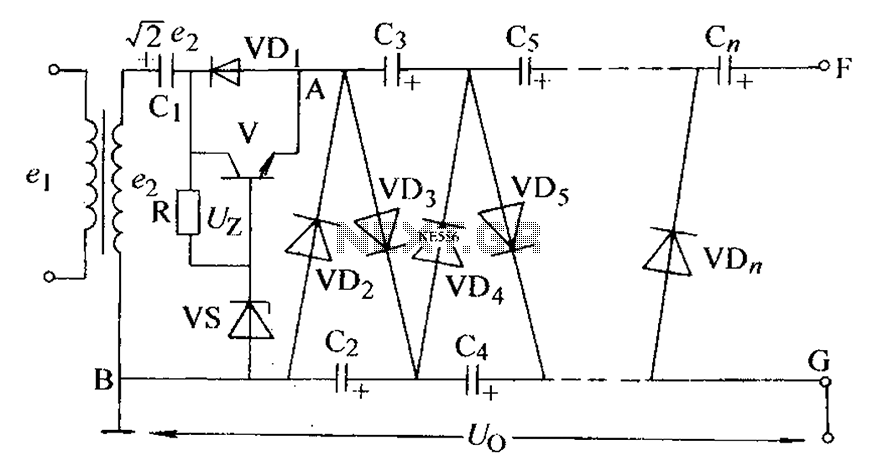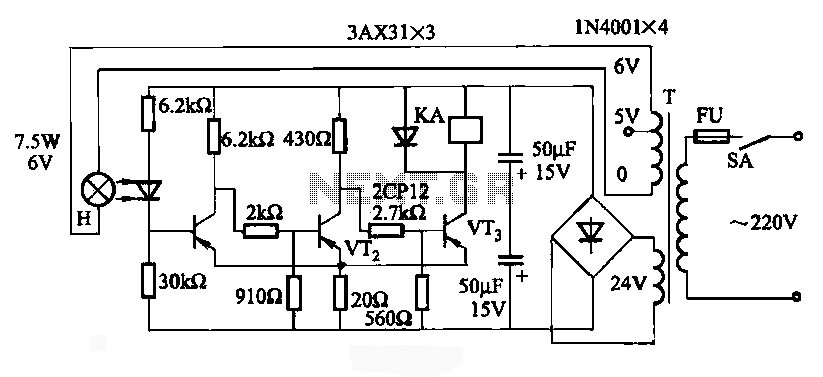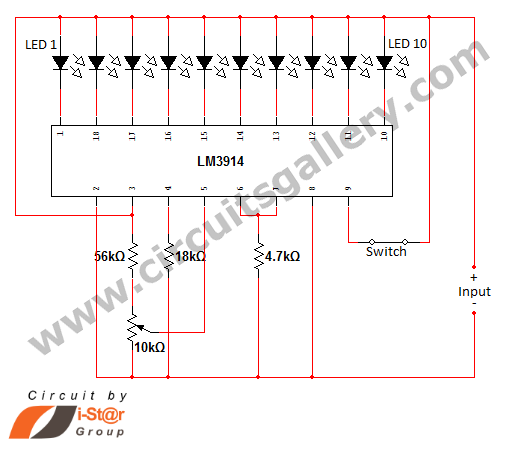
Symmetrical division circuit diagram

The 4013 pairs of D-type flip-flops in the astable multivibrator configuration are utilized as a binary divider output, generating an output frequency that is symmetrical, with a duty cycle of 50%.
The 4013 integrated circuit contains two D-type flip-flops that can be configured to operate in an astable multivibrator mode. In this configuration, the flip-flops continuously toggle between high and low states, producing a square wave output. This square wave signal serves as a clock pulse for various digital circuits and applications.
The astable multivibrator setup involves connecting the output of one flip-flop to the clock input of the other. This arrangement effectively divides the input frequency by two, allowing the circuit to produce an output frequency that is half of the input frequency. The symmetrical nature of the output ensures that the high and low states are equal in duration, resulting in a duty cycle of 50%.
To achieve the desired frequency, external resistors and capacitors are connected to the flip-flops, determining the timing characteristics of the oscillation. The frequency of oscillation can be calculated using the formula:
\[ f = \frac{1}{2 \times R \times C} \]
where \( R \) represents the resistance and \( C \) represents the capacitance in the timing network. By adjusting these components, the output frequency can be fine-tuned for specific applications.
The 4013 D-type flip-flops are suitable for various digital applications, including frequency dividers, pulse generators, and clock signal generation. Their versatility and reliability make them a valuable component in digital circuit design.4013 pairs of D-type flip-flop in the astable multivibrator is used as a binary divider output, will produce the output frequency of the multivibrator frequency symmetrical hal f 50/50.
The 4013 integrated circuit contains two D-type flip-flops that can be configured to operate in an astable multivibrator mode. In this configuration, the flip-flops continuously toggle between high and low states, producing a square wave output. This square wave signal serves as a clock pulse for various digital circuits and applications.
The astable multivibrator setup involves connecting the output of one flip-flop to the clock input of the other. This arrangement effectively divides the input frequency by two, allowing the circuit to produce an output frequency that is half of the input frequency. The symmetrical nature of the output ensures that the high and low states are equal in duration, resulting in a duty cycle of 50%.
To achieve the desired frequency, external resistors and capacitors are connected to the flip-flops, determining the timing characteristics of the oscillation. The frequency of oscillation can be calculated using the formula:
\[ f = \frac{1}{2 \times R \times C} \]
where \( R \) represents the resistance and \( C \) represents the capacitance in the timing network. By adjusting these components, the output frequency can be fine-tuned for specific applications.
The 4013 D-type flip-flops are suitable for various digital applications, including frequency dividers, pulse generators, and clock signal generation. Their versatility and reliability make them a valuable component in digital circuit design.4013 pairs of D-type flip-flop in the astable multivibrator is used as a binary divider output, will produce the output frequency of the multivibrator frequency symmetrical hal f 50/50.





